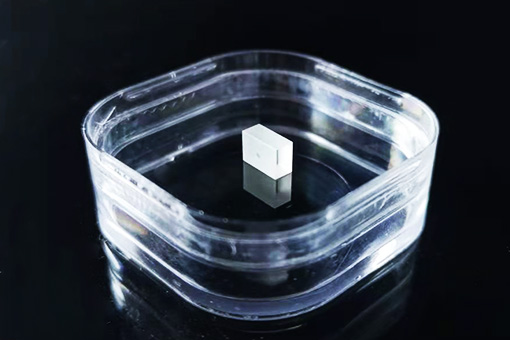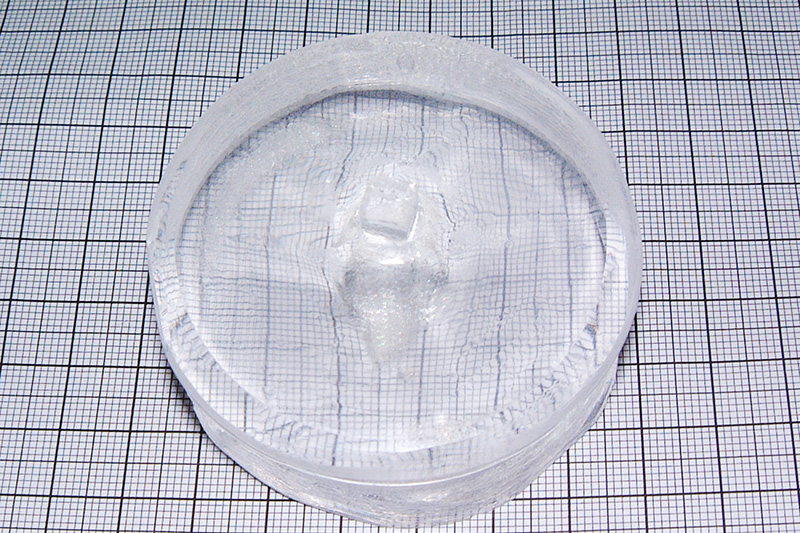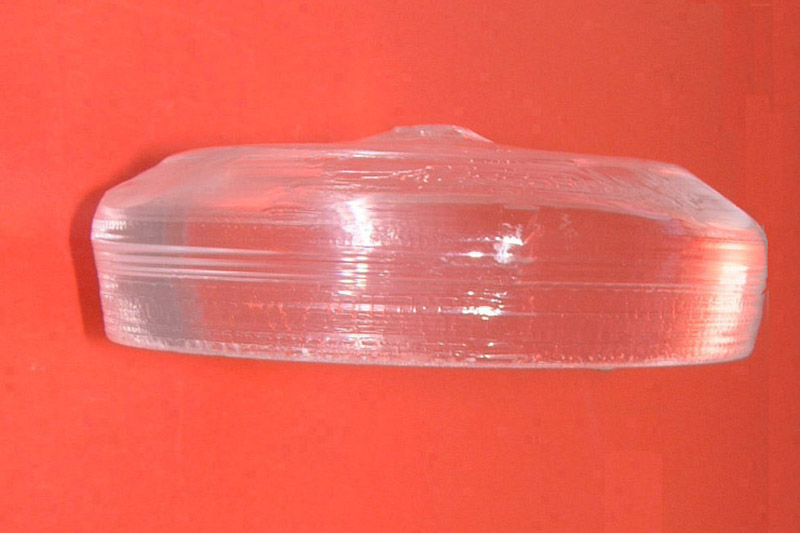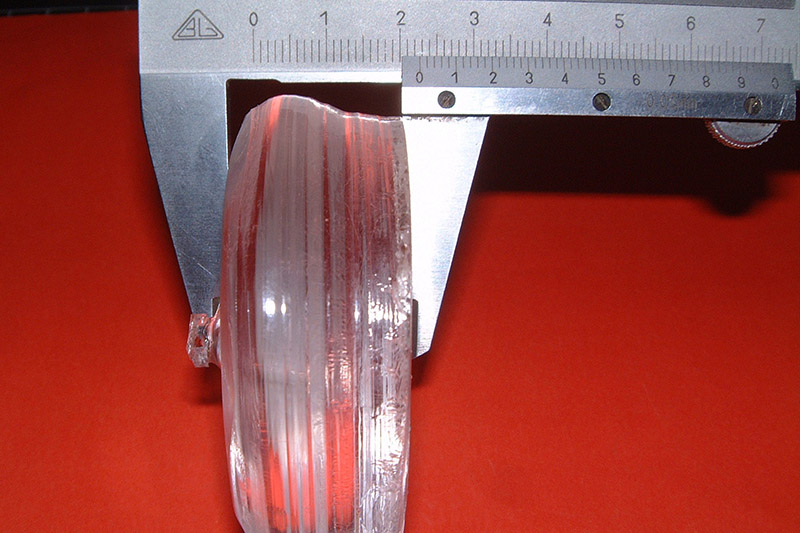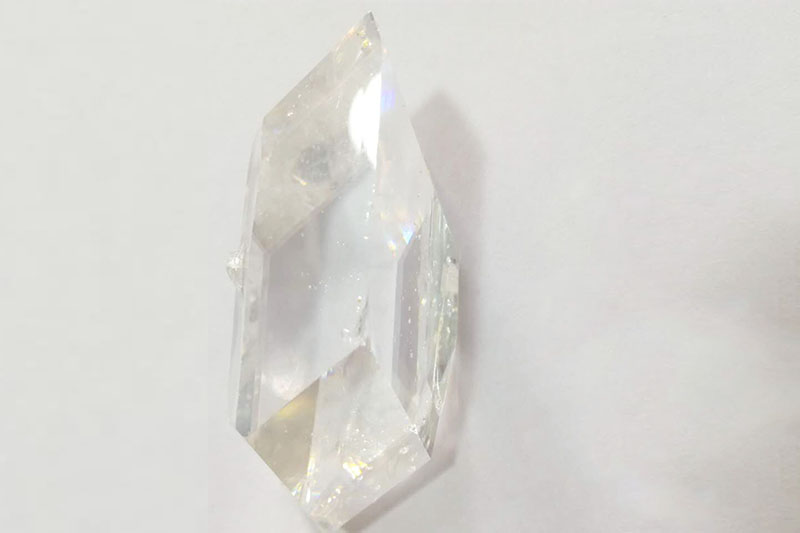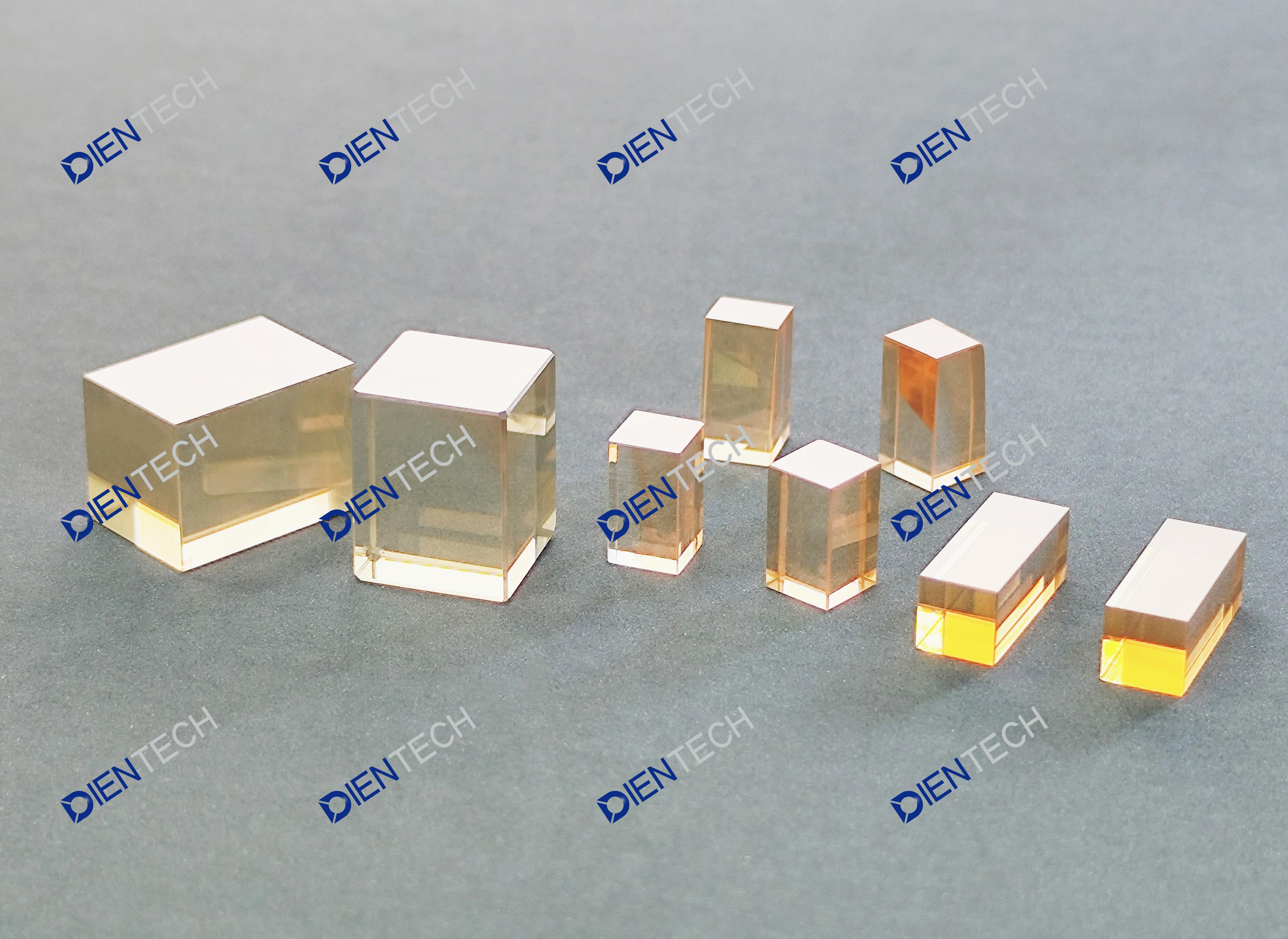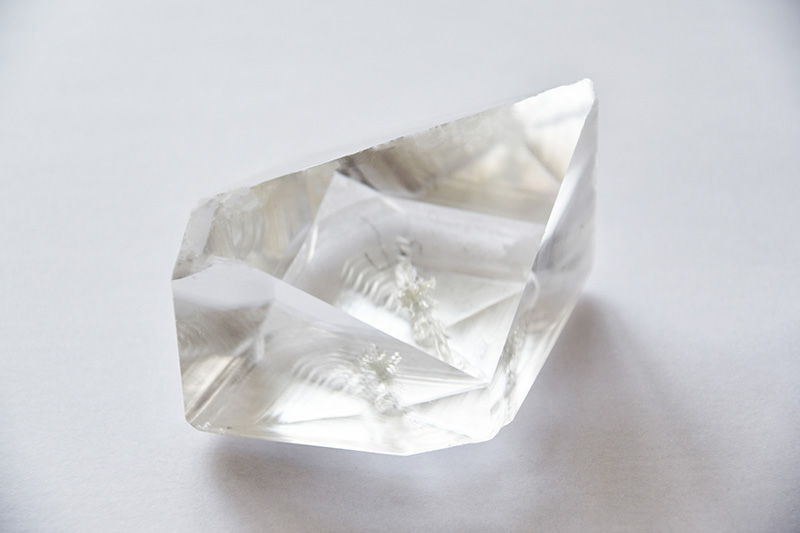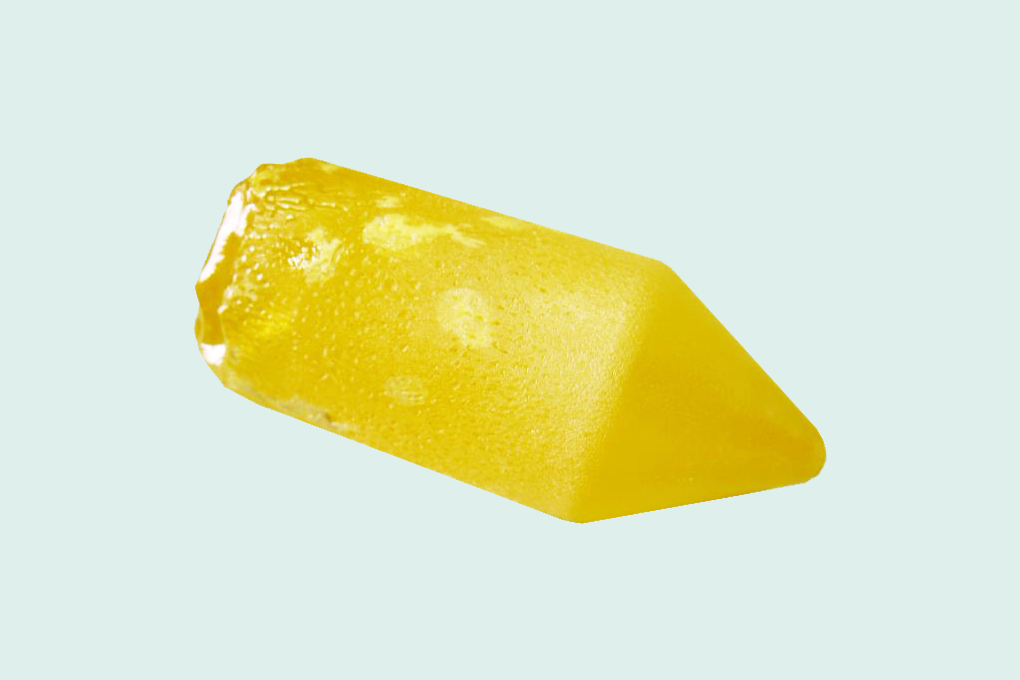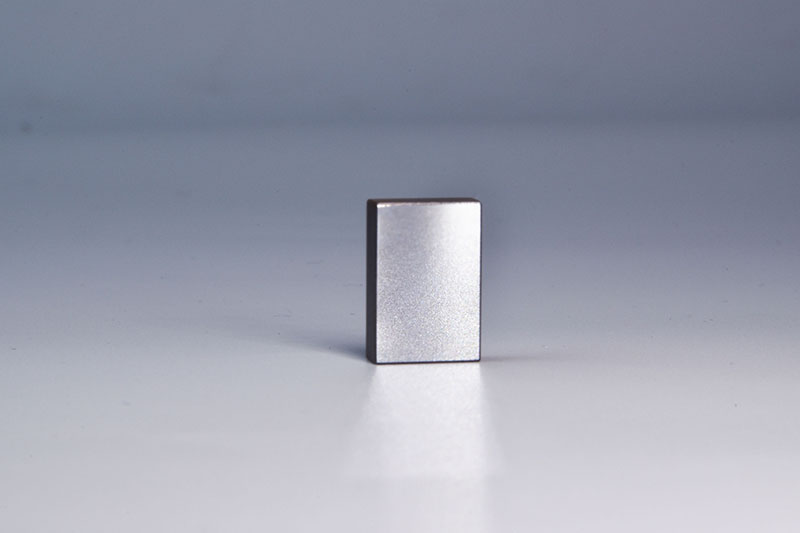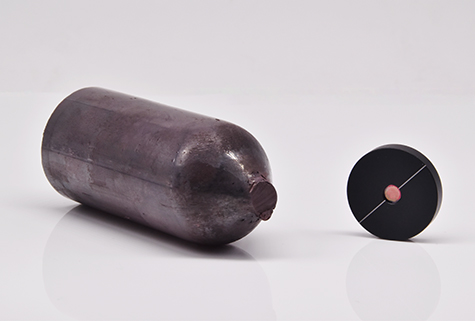BBO crystal
BBO is a new ultraviole frequency doubling crystal.It is a negative uniaxial crystal, with ordinary refractive index (no) larger than extraordinary refractive index (ne). Both type I and type II phase matching can be reached by angle tuning.
BBO is an efficient NLO crystal for the second, third and fourth harmonic generation of Nd:YAG lasers, and the best NLO crystal for the fifth harmonic generation at 213nm. Conversion efficiencies of more than 70% for SHG, 60% for THG and 50% for 4HG, and 200 mW output at 213 nm (5HG) have been obtained, respectively.
BBO is also an efficient crystal for the intracavity SHG of high power Nd:YAG lasers. For the intracavity SHG of an acousto-optic Q-switched Nd:YAG laser, more than 15 W average power at 532 nm was generated by a AR-coated BBO crystal. When it is pumped by the 600 mW SHG output of a mode-locked Nd:YLF laser, 66 mW output at 263 nm was produced from a Brewster-angle-cut BBO in an external enhanced resonant cavity.
BBO can also be used for E-O applications.BBO Pockels cells or EO Q-Switches are used to change the polarization state of light passing through it when a voltage is applied to the electrodes of electro-optic crystals such as BBO. Beta-Barium Borate ( β-BaB2O4, BBO ) with charactors wide transparency and phase matching ranges, large nonlinear coefficient, high damage threshold and excellent optical homogeneity and electro-optical properties provide attractive possibilities for various nonlinear optical applications and electro-optic applications.
Features of BBO Crystals:
• Broad phase matchable range from 409.6 nm to 3500 nm;
• Wide transmission region from 190 nm to 3500 nm;
• Large effective second-harmonic-generation (SHG) coefficient about 6 times greater than that of KDP crystal;
• High damage threshold;
• High optical homogeneity with δn ≈10-6/cm;
• Wide temperature-bandwidth of about 55℃.
Important notice:
BBO has a low susceptibility to the moisture. Users are advised to provide dry conditions for both application and preservation of BBO.
BBO is relatively soft and therefore requires precautions to protect its polished surfaces.
When angle adjusting is necessary, please keep in mind that the acceptance angle of BBO is small.
| Dimension tolerance | (W±0.1mm)x(H±0.1mm)x(L+0.5/-0.1mm) (L≥2.5mm)(W±0.1mm)x(H±0.1mm)x(L+0.1/-0.1mm) (L<2.5mm) |
| Clear aperture | central 90% of the diameterNo visible scattering paths or centers when inspected by a 50mW green laser |
| Flatness | less than L/8 @ 633nm |
| Wavefront distortion | less than L/8 @ 633nm |
| Chamfer | ≤0.2mm x 45° |
| Chip | ≤0.1mm |
| Scratch/Dig | better than 10/ 5 to MIL-PRF-13830B |
| Parallelism | ≤20 arc seconds |
| Perpendicularity | ≤5 arc minutes |
| Angle tolerance | ≤0.25 |
| Damage threshold[GW/cm2] | >1 for 1064nm, TEM00, 10ns, 10HZ (polished only)>0.5 for 1064nm, TEM00, 10ns, 10HZ (AR-coated)>0.3 for 532nm, TEM00, 10ns, 10HZ (AR-coated) |
| Basic properties | |
| Crystal Structure | Trigonal , Space Group R3c |
| Lattice Parameter | a=b=12.532Å,c=12.717Å,Z=6 |
| Melting Point | About 1095℃ |
| Mohs Hardness | 4 |
| Density | 3.85 g/cm3 |
| Thermal Expansion Coefficients | α11=4 x 10-6/K; α33=36x 10-6/K |
| Thermal Conductivity Coefficients | ⊥c: 1.2W/m/K; //c: 1.6W/m/K |
| Transparency Range | 190-3500nm |
| SHG Phase Matchable Range | 409.6-3500nm (Type I) 525-3500nm (Type II) |
| Thermal-optic Coefficients (/℃) | dno/dT=-16.6x 10-6/℃ dne/dT=-9.3x 10-6/℃ |
| Absorption Coefficients | <0.1%/cm(at 1064nm) <1%/cm(at 532nm) |
| Angle Acceptance | 0.8mrad·cm (θ, Type I, 1064 SHG) 1.27mrad·cm (θ, Type II, 1064 SHG) |
| Temperature Acceptance | 55℃·cm |
| Spectral Acceptance | 1.1nm·cm |
| Walk-off Angle | 2.7° (Type I 1064 SHG) 3.2° (Type II 1064 SHG) |
| NLO Coefficients | deff(I)=d31sinθ+(d11cos3Φ- d22 sin3Φ) cosθq deff (II)= (d11 sin3Φ + d22 cos3Φ) cos2θ |
| Non-vanished NLO susceptibilities | d11 = 5.8 x d36(KDP) d31 = 0.05 x d11 d22 < 0.05 x d11 |
| Sellmeier Equations (λ in μm) |
no2=2.7359+0.01878/(λ2-0.01822)-0.01354λ2 ne2=2.3753+0.01224/(λ2-0.01667)-0.01516λ2 |
| Electro-optic coefficients | γ22 = 2.7 pm/V |
| Half-wave voltage | 7 KV (at 1064 nm,3x3x20mm3) |
| Model | Product | Size | Orientation | Surface | Mount | Quantity |
| DE0998 | BBO | 10*10*1mm | θ=29.2° | Pcoating@800+400nm | Unmounted | 1 |
| DE1012 | BBO | 10*10*0.5mm | θ=29.2° | Pcoating@800+400nm | φ25.4mm | 1 |
| DE1132 | BBO | 7*6.5*8.5mm | θ=22°type1 | S1:Pcoating@532nm S2:Pcoating@1350nm |
Unmounted | 1 |
| DE1156 | BBO | 10*10*0.1mm | θ=29.2° | Pcoating@800+400nm | φ25.4mm | 1 |
Products categories
-

Phone
Phone
-

Email
Email
-

whatsapp
whatsapp
-

Wechat
Wechat

-

Top

